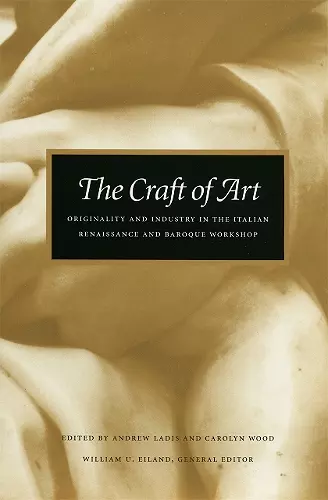The Craft of Art
Originality and Industry in the Italian Renaissance and Baroque Workshop
Carolyn Wood editor Andrew Ladis editor William U Eiland editor
Format:Paperback
Publisher:University of Georgia Press
Published:15th Mar '16
Should be back in stock very soon

In this collection of nine essays some of the preeminent art historians in the United States consider the relationship between art and craft, between the creative idea and its realization, in Renaissance and Baroque Italy. The essays, all previously unpublished, are devoted to the pictorial arts and are accompanied by nearly 150 illustrations. Examining works by such artists as Michelangelo, Titian, Volterrano, Giovanni di Paolo, and Annibale Carracci (along with aspects of the artists' creative processes, work habits, and aesthetic convictions), the essayists explore the ways in which art was conceived and produced at a time when collaboration with pupils, assistants, or independent masters was an accepted part of the artistic process.
The consensus of the contributors amounts to a revision, or at least a qualification, of Bernard Berenson's interpretation of the emergent Renaissance ideal of individual "genius" as a measure of original artistic achievement: we must accord greater influence to the collaborative, appropriative conventions and practices of the craft workshop, which persisted into and beyond the Renaissance from its origins in the Middle Ages. Consequently, we must acknowledge the sometimes rather ordinary beginnings of some of the world's great works of art--an admission, say the contributors, that will open new avenues of study and enhance our understanding of the complex connections between invention and execution.
With one exception, these essays were delivered as lectures in conjunction with the exhibition The Artists and Artisans of Florence: Works from the Horne Museum hosted by the Georgia Museum of Art in the fall of 1992.
What emerges from these essays is a sharperunderstanding of the complex and shifting balance between the mental and themanual in a work of art in a time when collaboration with pupils, assistants,or independent masters was an accepted part of the artistic process. . . . Itis simply a book that all art historians should read and one from which allscholars of the early modern period will benefit.
* Sixteenth Century JournISBN: 9780820349947
Dimensions: unknown
Weight: 379g
256 pages